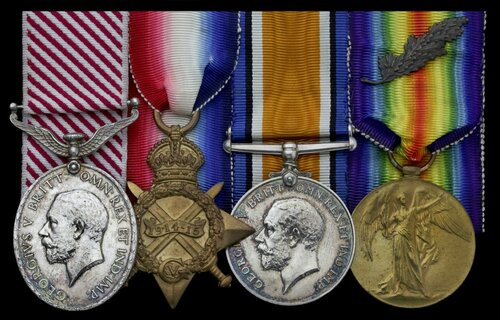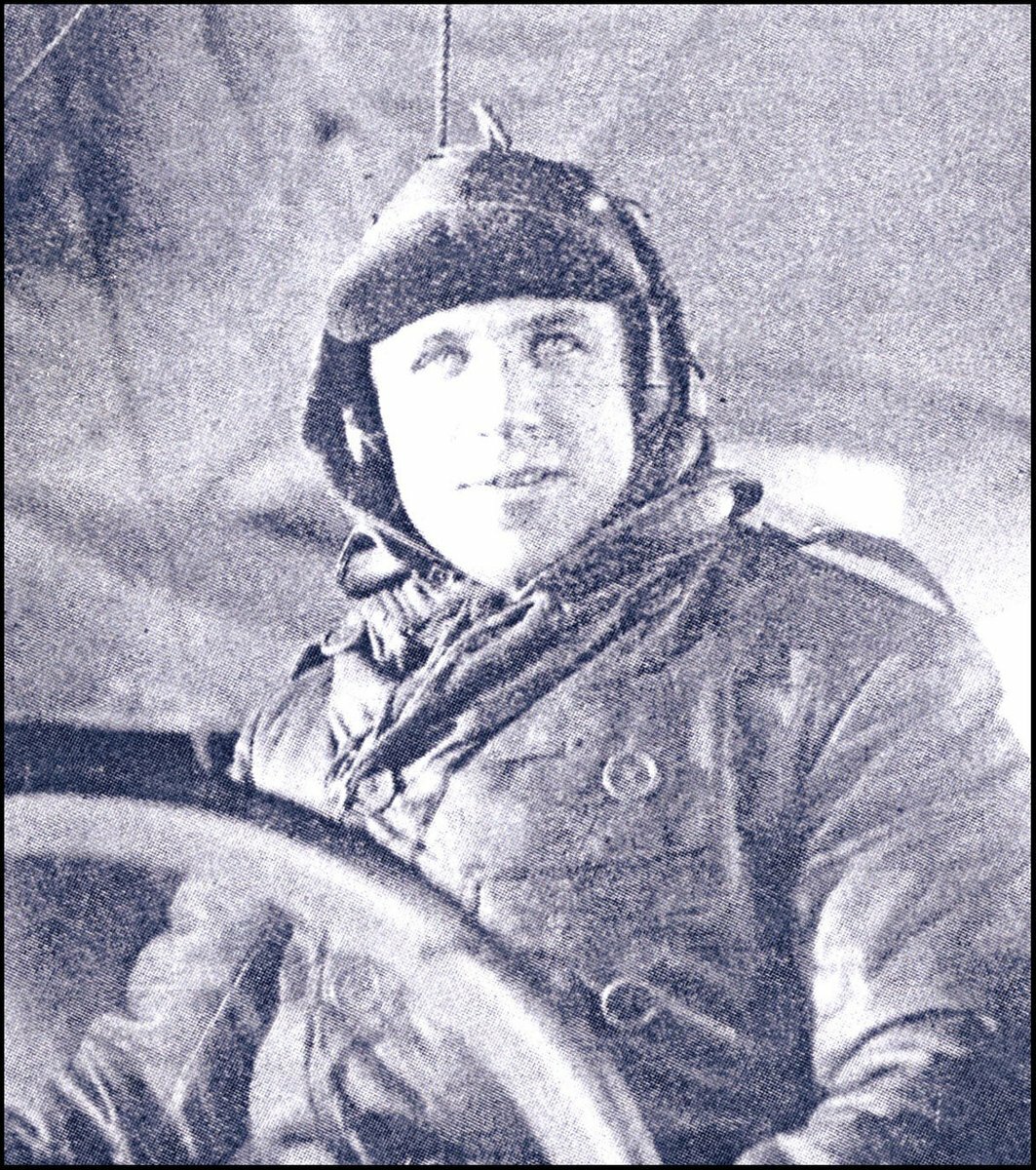Auction: 20003 - Orders, Decorations and Medals
Lot: 312
A rare Great War A.F.M. group of four awarded to Leading Mechanic W. J. Baker, Royal Air Force, late Royal Naval Air Service, a qualified Airship radio operator who flew patrols as a crewman of SS-15 in 1915 and later C-15 when this airship crashed into H.M.S. Phaeton during towing trials in 1917
Air Force Medal, G.V.R. (205926 Corpl. Mech. Baker. W. J., R.A.F.); 1914 Star (F.5926 W. J. Baker, A.M.1. R.N.A.S.); British War and Victory Medals, with M.I.D. oak leaves (F.5926 W. J. Baker. L.M. R.N.A.S.) edge bruise to first, generally good very fine (4)
A.F.M. London Gazette 3 June 1919.
102 Air Force Medals awarded for the Great War.
M.I.D. London Gazette 1 October 1917:
‘For services on patrol duties and submarine searching in home waters’
William Joseph Baker was born on 8 October 1894 in Bristol. A telegraphist by trade, he joined the Royal Naval Air Service on 22 June 1915, rated as Air Mechanic I W/T, service no. F5926. From 1 September 1915 until 30 September 1915, Baker served as a crew member of Sea Scout 16 (SS-16), flying from R.N.A.S. East Fortune. SS-16 was an early 1915 designed airship with a crew of two that used the modified fuselage of a BE.2c as its power and as its crew ‘car’. The Sea Scouts were, as their name suggests, used for anti submarine and sea patrols.
Still at R.N.A.S. East Fortune, between 1 February 1917 and 17 July 1917, Baker, who had now been promoted Leading Mechanic (Wireless Operator), served as a crew member of Coastal 15 (C-15). Coastal Class airships were a much larger class of airship than the Sea Scouts. They had a crew of four and their purpose built crew ‘car’ could carry two machine guns, four 112lb bombs or two 230lb bombs. During Baker’s time on C-15, it was commanded by Flight-Lieutenant Ronald Scott Sugden and flew regular sea patrols. On 3 May 1917, it carried out successful towing trials with H.M.S. Phaeton. It is most likely, given the date of the award appearing in the London Gazette, that Baker’s Mention in Despatches was for this action. However on 5 June 1917 whilst carrying out similar trials, it crashed into H.M.S. Phaeton and was wrecked.
Between 30 July 1917 and April 1918, Baker would serve at R.N.A.S. Cranwell, East Fortune, Longside, Howden, and East Fortune again. On 1 April 1918, Baker was transferred to the Royal Air Force, service no. 205926, with the rank of Corporal Mechanic (Wireless Operator). He carried on serving at East Fortune until pretty much the end of the War, with a couple of brief periods at Barlow and Howden. Unlike his R.N.A.S. service papers, Baker’s R.A.F. service papers are non specific regarding any airships he served with during 1918. It may be he did not serve on any but given his experience and qualifications as a wireless operator, it’s likely he would have. He certainly didn’t go on to serve on seaplane’s such as ‘large Americas’, which many wireless operator did. Baker was discharged on 5 February 1919, transferring to ‘G’ Reserve on 6 March of that year.
Note: The recipient’s service papers note that he was Mentioned in Despatches a second time between ‘18 March 1920 to 25 March 1920’.
The Fleet Air Arm Museum at R.N.A.S. Yeovilton holds in its collection the photo album belonging to Flight-Lieutenant Ronald Scott Sugden, Baker’s Skipper when he served on C-15. Photocopies of the contents of the album, approximately 66 photos, included with this lot. They include many superb shots of airships and crew, Baker at the wheel in flight gear &c.
Sold with the recipient’s original Admiralty Mentioned in Despatches Certificate and a large quantity of copied research, including copies of the photographs from Flight-Lieutenant Sugden’s album.
Subject to 20% VAT on Buyer’s Premium. For more information please view Terms and Conditions for Buyers.
Sold for
£2,800
Starting price
£1800







